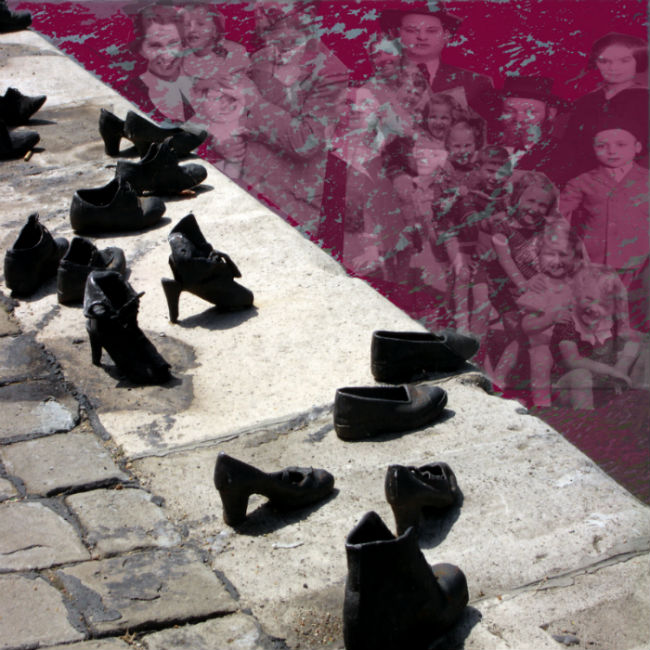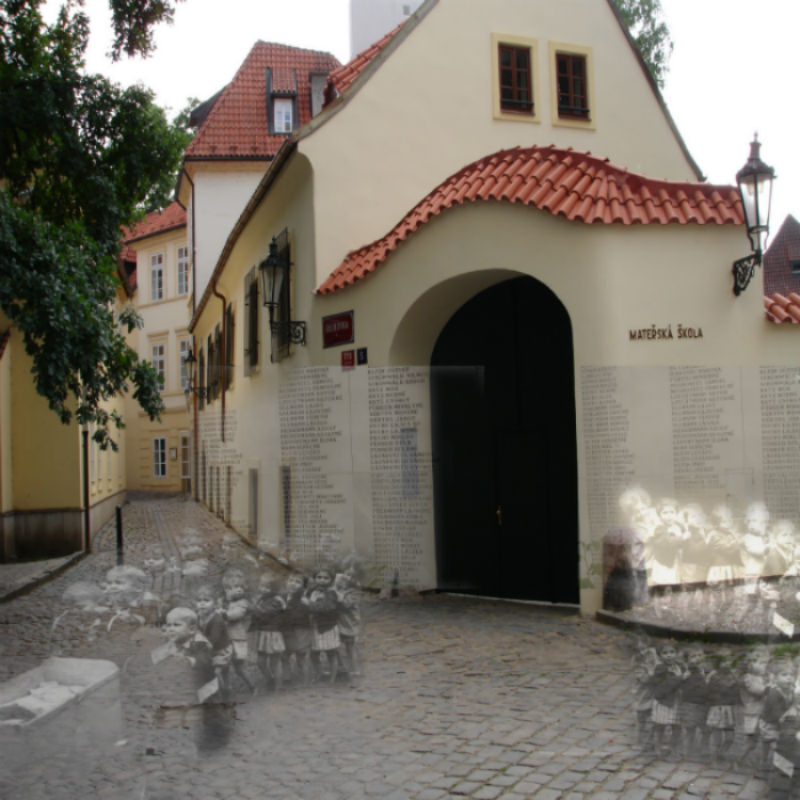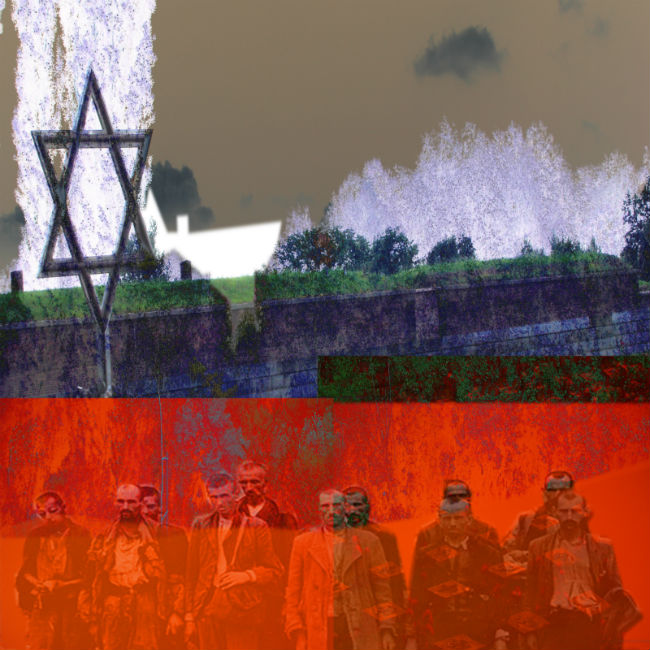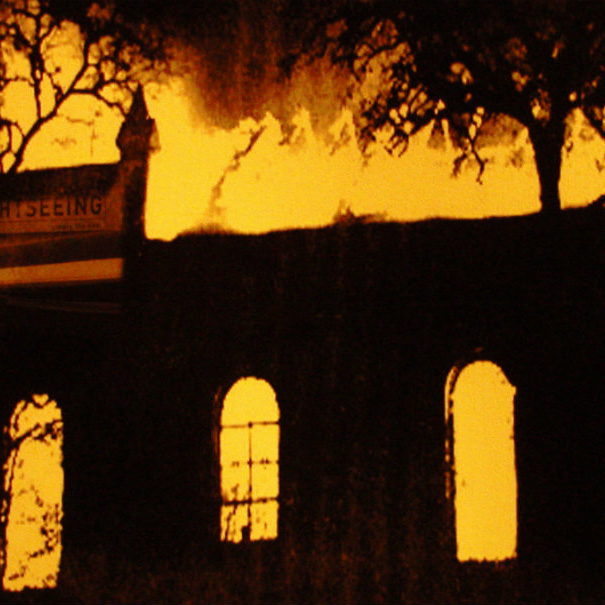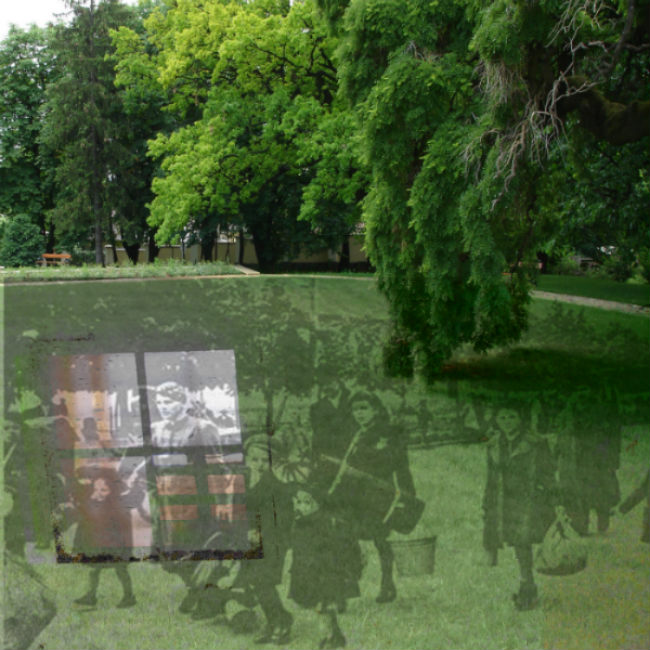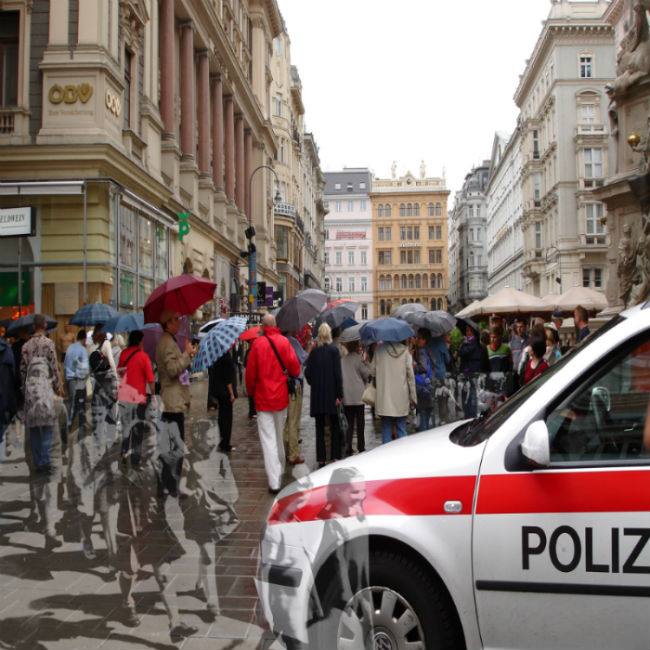A visit to Eastern Europe in the spring of 2007 had a profound effect on Linda Dubin Garfield, printmaker/mixed media artist. Visiting the beautiful countryside of Hungary, Austria and the Czech Republic and experiencing the lovely, sophisticated cities of Budapest, Vienna and Prague left her with a deep sadness that she could not explain. Being in the actual places where the Holocaust happened made the artist mourn the losses of World War II in a more personal way than ever. Lavish, big synagogues in the wine country of Hungary, now void of Jews, have become state-run arts and cultural centers with no recognition of their former use. Once thriving with vibrant Jewish communities, these orphaned synagogues left her feeling very depressed, with little hope for a future of Jews in Europe. Seeing Terezin and walking the grounds that held so much pain and death, even though the Nazis showcased Terezin as the "model concentration camp," transformed the full range of Linda's perceptions, her visual as well as emotional sensibility.
The idea for a series of work based on her trip was born in the narrow streets of Prague, in the rolling hills of Hungary and in the darkened cells of Terezin. Who could not know what was happening? Who could not see what was going on? What illusions did people accept to mask the Holocaust that was happening outside their windows? Where did the Jewish people go when they disappeared? The artist's series Behind the Scene/Seen deals with the issues embedded in this landscape: reality/illusion, past/present, and history/future generations.
